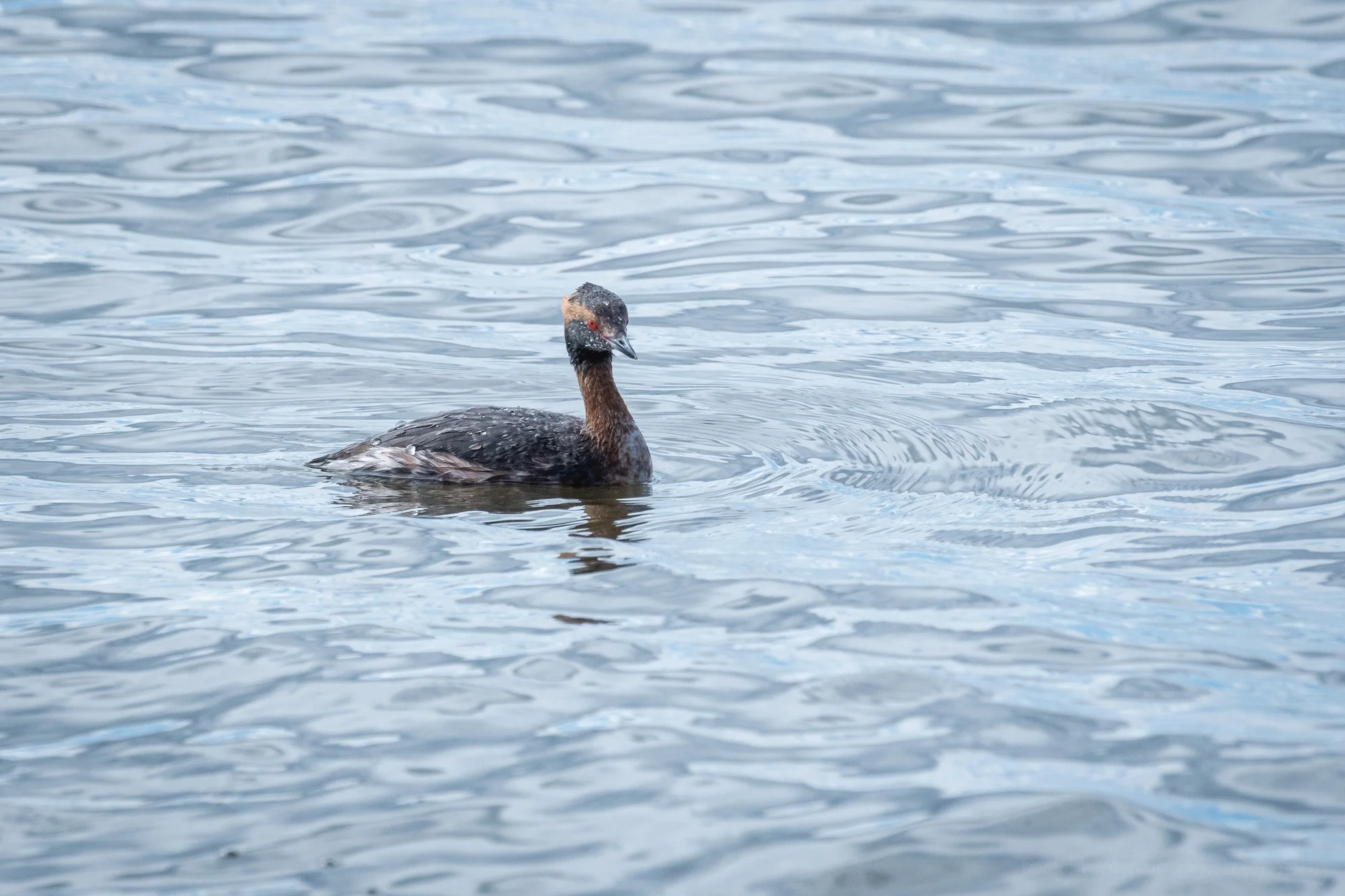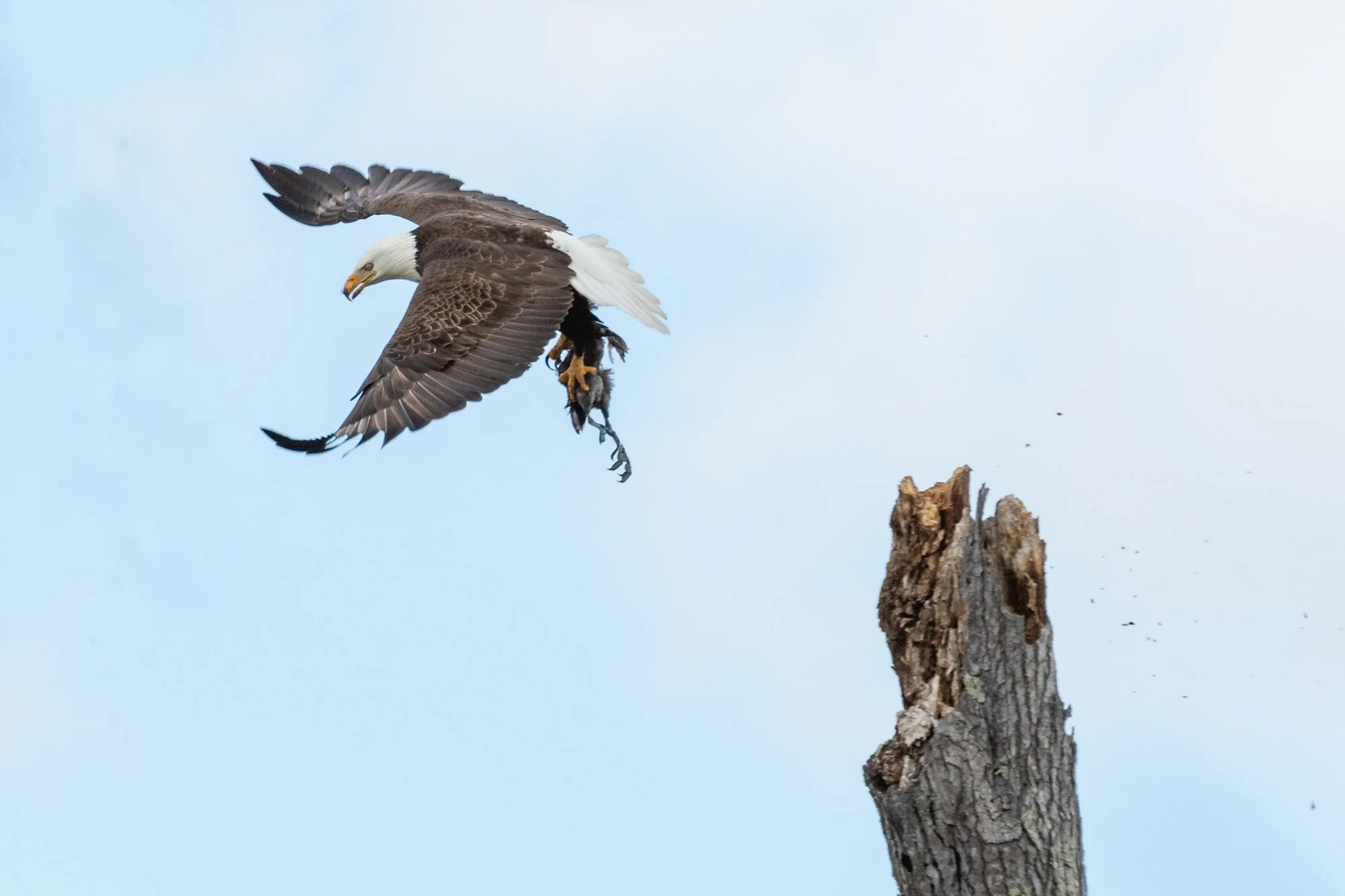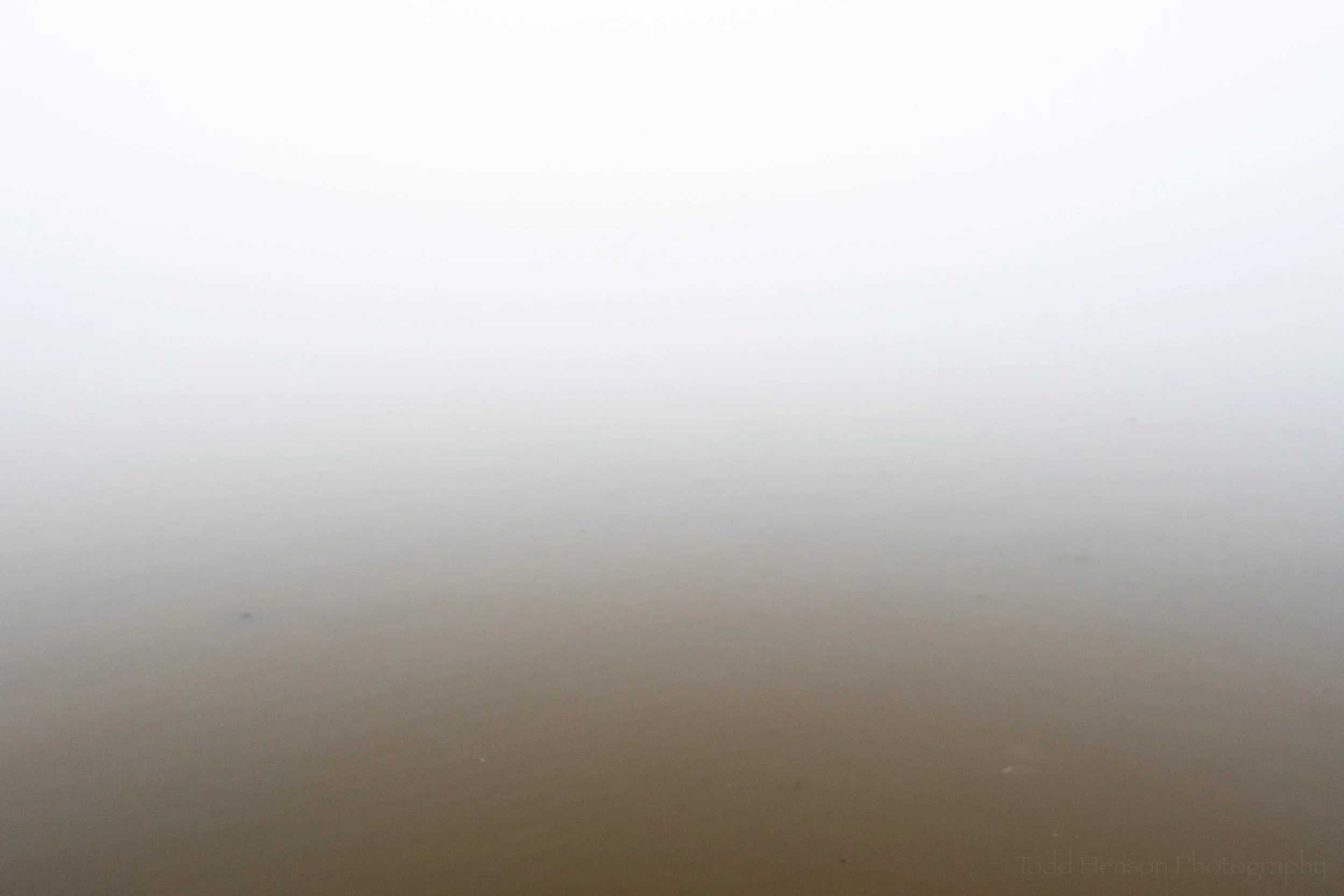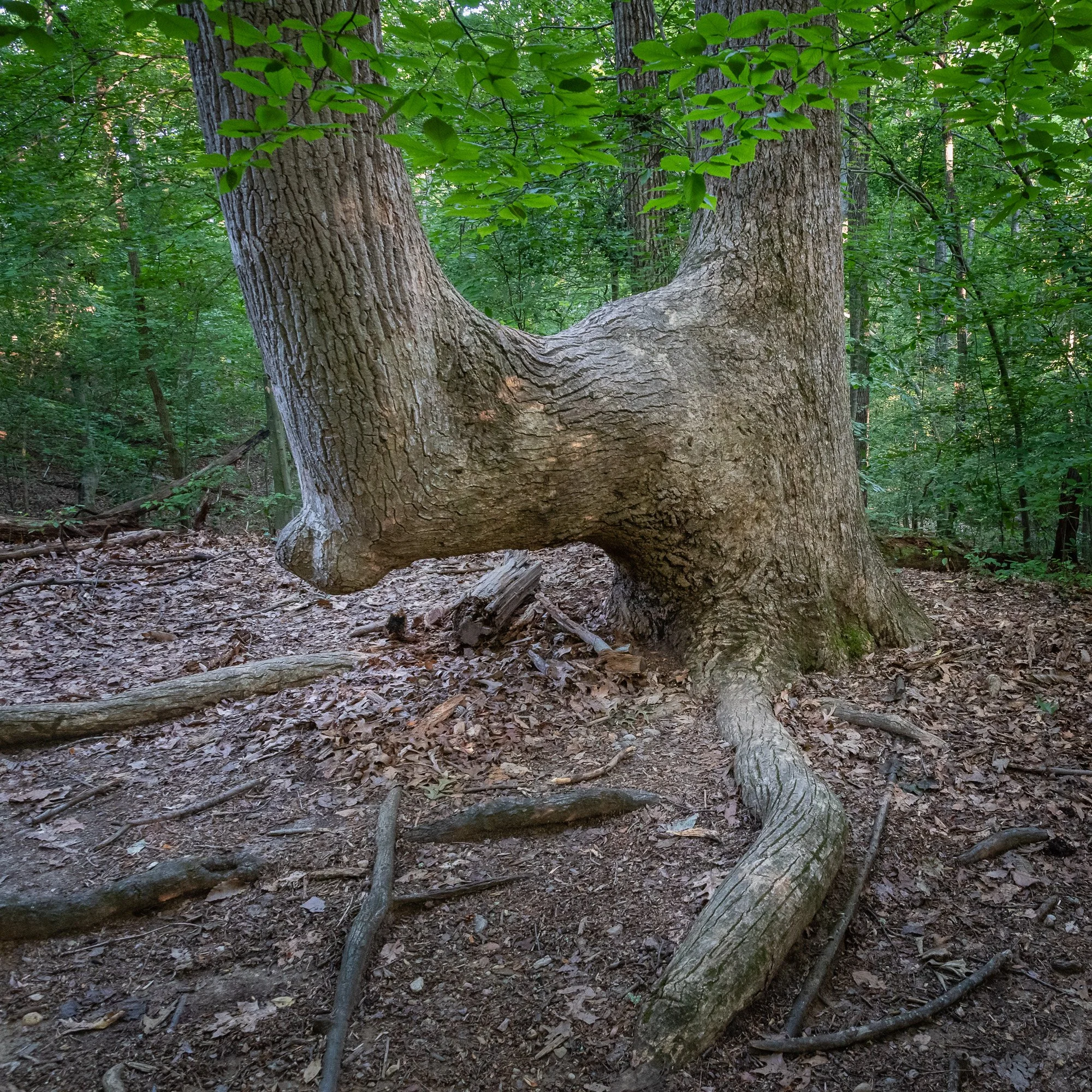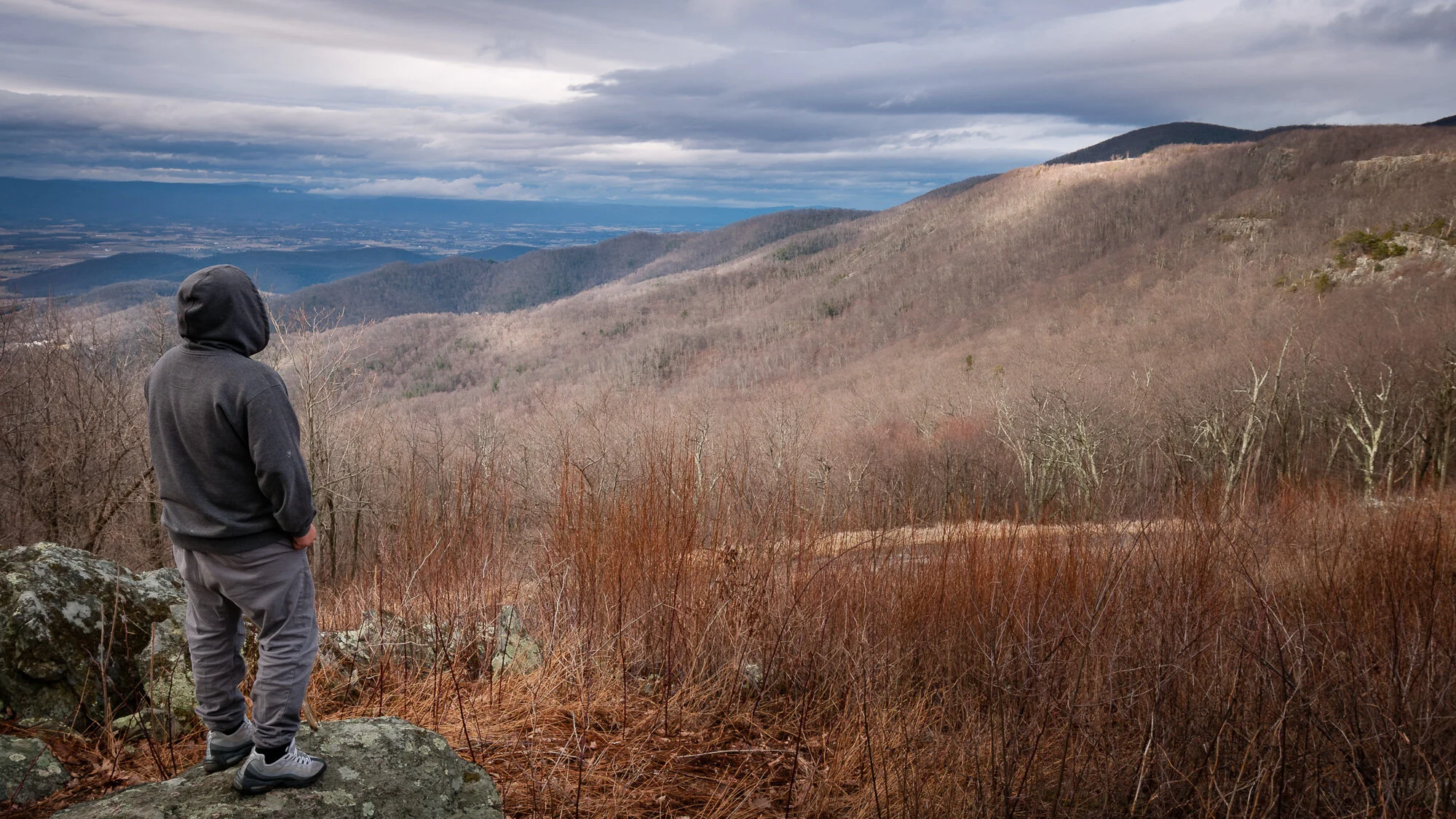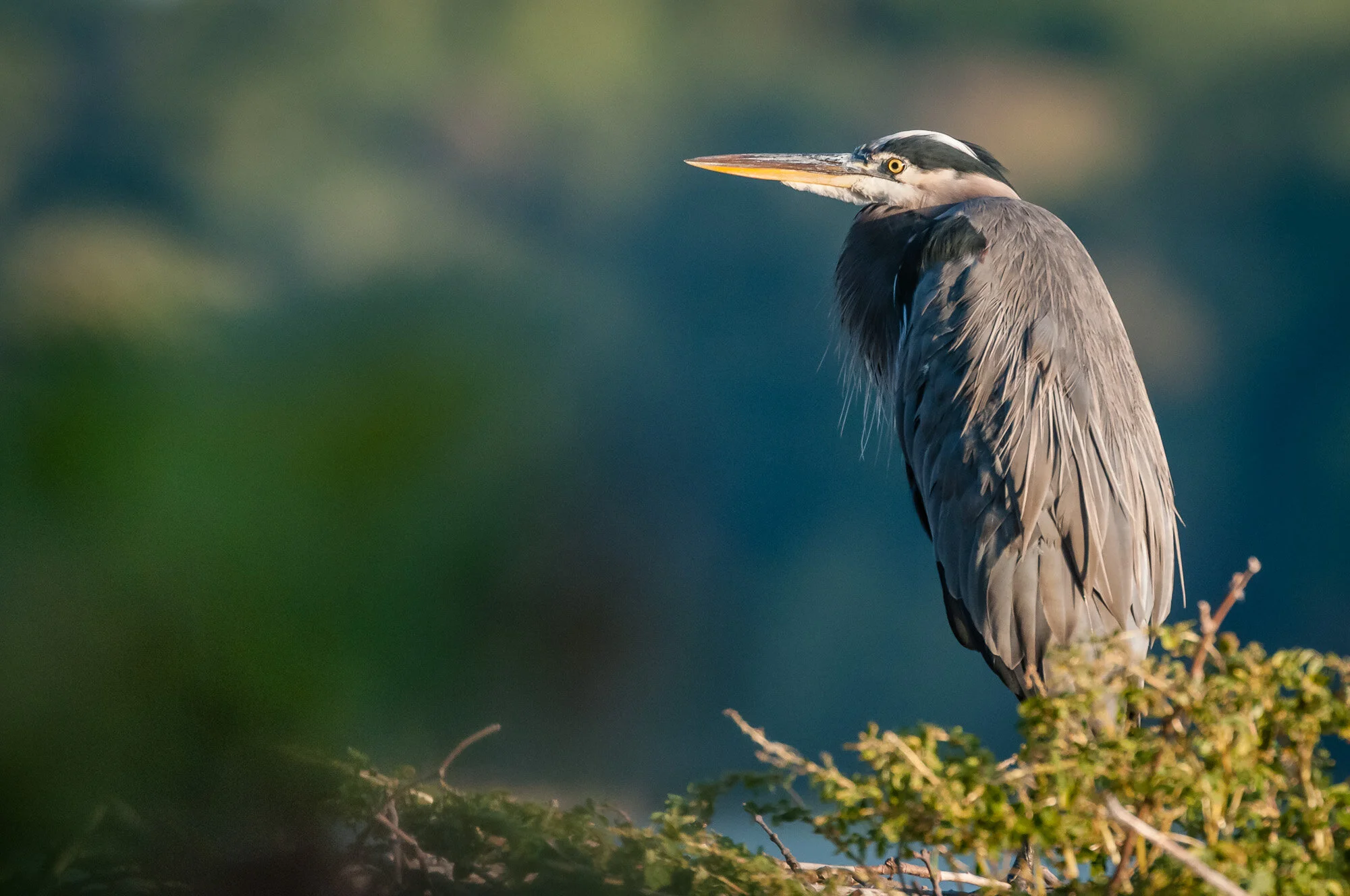Our first view of an adolescent eastern box turtle
My father has great eyes for noticing interesting things on the trail, and while hiking Sky Meadows State Park in Virginia he saw a young eastern box turtle right on the trail. We could easily have stepped on it if he hadn’t noticed it as soon as he did.
Getting closer to eye-level with the young eastern box turtle
Unfortunately, right after he noticed it we heard what sounded like the barking of a dog not too far ahead on the trail, and we had run into some hikers with their dog when we first set out. So I quickly got down and attempted to capture a number of photos of this beautiful turtle from several angles. Then I did something I rarely do as I hate directly interfering with nature. I picked up the young box turtle and gently placed it in the brush a little ways off the trail hoping it would minimize the risk of dogs finding and injuring it or of hikers accidentally stepping on it if they didn’t see it.
Getting a front view of the young eastern box turtle.
Not long after I moved the turtle a single person came down the trail and walked by us. We stood by the turtle for a little while in case a dog showed up so we could keep them from sniffing around the turtle, but no dogs showed up. We then wondered if that person had been practicing his dog calls. :-) Either way, we walked on, leaving the young eastern box turtle in peace.
Looking down on the young eastern box turtle shows the beautiful patterns on its shell.
This wasn’t the youngest turtle I’ve ever seen, as I my father and I have seen a newly hatched snapping turtle walking on the trail towards water. But this was certainly the youngest eastern box turtle I’ve seen so far, though I don’t know how old it is. Look at the bright and beautiful patterns on its shell.
I tried to help the young eastern box turtle blend in to better protect it from whatever might be coming down the trail.
Do you have any box turtle stories to tell? I’d love to hear about them.
Do you enjoy these posts?
Sign up to receive periodic emails with updates and thoughts. Don’t worry, I won’t spam you. And please consider purchasing artwork or products from my online store, and using my affiliate links in the sidebar to the right when shopping online.
I appreciate your support!





















